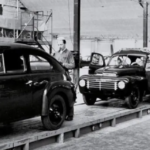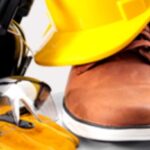The Hierarchy of Controls features an inverted pyramid, it’s a framework and a visual guide for controlling workplace hazards and protecting employees.
The hierarchy diagram below starts with the controls perceived to be most effective. Then, it moves down to those considered least effective. This diagram is defined by NIOSH (National Institute for Occupational Safety and Health) and the hierarchy flows as follows:
- Elimination – Physically remove the hazard
- Substitution – Replace the hazard with a safer alternative
- Engineering controls – Isolate people from the hazard
- Administrative controls – Change the way people work
- Personal protective equipment – Protect the worker with PPE
Following this hierarchy normally leads to the implementation of inherently safer systems, where the risk of illness or injury is substantially reduced.

Each Hierarchy Level Defined
Elimination
Physically remove the hazard. Elimination removes the hazard at the source. This could include changing the work process to stop using a toxic chemical, heavy object or sharp tool. It is the preferred solution to protect workers because no exposure can occur. Although elimination and substitution are the most effective at reducing hazards, they’re often the most difficult measures to implement for an existing process.
If the process is still at the design or development stage, elimination and substitution of hazards may be inexpensive and simple to implement. For an existing process, major changes in equipment and procedures may be required. Once you move below elimination on the hierarchy, some risk likely will be involved. You could possibly get to zero risk with substitution, but only with elimination are you accomplishing that by removing the hazard completely.
Substitution
Replace the hazard with a safer alternative. Substitution can come in many forms such as smaller quantities of a hazardous material, a lower voltage of energy, and reduced temperatures or pressures. Simplification is the process of reducing unnecessary complexity; confusion caused by instructions, labels or signs; or the number of steps to complete a task.
Simplification can be considered a type of substitution. You’re substituting something simpler instead of something complex. Reliability is being improved.
Engineering controls
Isolate people from the hazard. Types of engineering controls to separate workers from a hazard include ventilation, guardrails and machine guards.
Administrative controls
Change the way people work. Examples of administrative controls include rotating workers to limit their exposures to a hazardous substance, scheduling work at cooler times of the day during the summer and restricting access to a dangerous area in a workplace. Administrative controls and PPE are frequently used with existing processes where hazards are not particularly well controlled. These two kinds of controls are relatively inexpensive initially but can be very costly to sustain because they can require extensive oversight or continuous training and supervision.
PPE
Protect the worker with personal protective equipment. When it comes to PPE, the long-stated piece of advice in the safety world is: Don’t just turn to it without first exploring other control options. You shouldn’t take necessarily the easiest route or use that as a permanent solution when there are other options that are probably more reliable, more effective in the long run.
PPE is crucial and will always be needed, as are any of the controls further up the hierarchy.
Key concepts
When progressing through the Hierarchy of Controls, take time and proximity into account. Time includes working early in the work process – or, better yet, in the planning process – to control hazards, rather than later. As for proximity, be aware that toward the top of the hierarchy, the objective is to control the source of the hazard. Toward the bottom, the goal is to protect the worker and/or others from potential harm.
Additionally, controls are either passive or active. At the top of the hierarchy, a worker won’t need to play a role to help control the hazard, but will need to become more of an active participant farther down the hierarchy. Even with engineering controls, some of them require more actions by the workers and the management than others, whether it’s filter changes, maintenance inspections or just flipping switches.
The more actions needed, the more the “must trust” factor comes into play. For example, employers will have to trust workers to wear PPE correctly every time, while workers will have to trust that their employer will provide the proper PPE. The farther you go up on the hierarchy, reliance on or trust in sometime fallible people is less of a factor.
At the top of the hierarchy, a worker won’t need to play a role to help control the hazard, but will need to become more of an active participant farther down the hierarchy.
How to use the hierarchy
Along with using the hierarchy to “identify and evaluate options,” employers are advised to:
- Involve workers, who often have firsthand knowledge of conditions that create hazards and insights into how to control them.
- Use a hazard control plan to guide the selection and implementation of controls, and apply controls according to the plan.
- Evaluate the effectiveness of controls to determine whether they continue to provide protection, or if different controls may be more effective. Review new technologies for their potential to be more protective, more reliable or less costly.
- Develop plans with measures to protect workers during emergencies and non-routine activities.
If necessary, use interim controls until long-term solutions are put in place.
Prevention through design stresses that it’s preferable to avoid hazards up front rather than having to work to eliminate them later. Standard will emphasize the importance of doing design safety reviews of a new process or any other similar changes in the workplace. That review may involve a team of people, including safety and health personnel.




